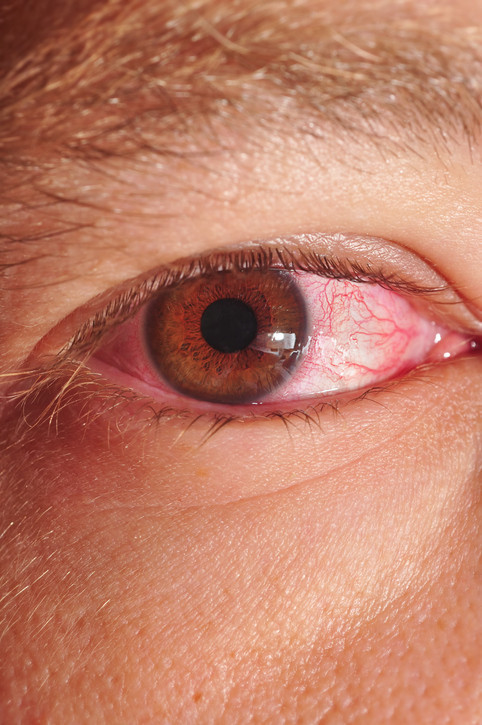Recent Blog Articles

Lead poisoning: What parents should know and do

How does waiting on prostate cancer treatment affect survival?

Does running cause arthritis?

Is alcohol and weight loss surgery a risky combination?

Preventing ovarian cancer: Should women consider removing fallopian tubes?

Healthier planet, healthier people

Is snuff really safer than smoking?

Will miscarriage care remain available?

Considering collagen drinks and supplements?

Does less TV time lower your risk for dementia?
Pinkeye (Conjunctivitis)
What Is It?
Conjunctivitis, also called pinkeye, is an inflammation of the conjunctiva, the transparent membrane that lines the eyelids and covers the whites of the eyes. Conjunctivitis can be triggered by allergies, by contact with irritating chemicals, or by infections with either a virus or bacteria.

Image: dtimiraos/Getty Images
- Viral conjunctivitis often is caused by one of the adenoviruses, a family of viruses that usually causes colds (upper respiratory illnesses). In temperate climates, adenoviruses are most active during spring, early summer and mid-winter. They infect fluids in the eyes, mouth and nose, and can spread from person to person on hands and in the droplets of coughs and sneezes. In most cases, adenoviruses cause only a mild case of conjunctivitis. However, they are capable of causing a more serious infection, called kerato-conjunctivitis, which can cloud the cornea and interfere with vision. Besides adenoviruses, other viruses that cause conjunctivitis include enteroviruses, the measles virus (rubeola) and the herpes simplex virus.
- Bacterial conjunctivitis can be caused by several different types of bacteria, including Haemophilus influenzae, pneumococci, staphylococci (staph) and streptococci (strep). Most bacterial infections spread through contact with hands that have been contaminated with the bacteria. Children born to mothers with gonorrhea or chlamydia also can develop conjunctivitis if their eyes are infected by contaminated secretions in the birth canal during vaginal delivery
Symptoms
Symptoms of conjunctivitis include:
- Red, watery eyes
- Eye discomfort (feeling "itchy" or "scratchy")
- A discharge from the eyes that may form crusts around the eyelashes
If it's viral conjunctivitis, this eye discharge tends to be thin, clear and watery. The eye discharge from bacterial conjunctivitis it is often thick, discolored (yellow or greenish), cloudy and sticky. Sometimes, the discharge is so sticky that the eyelids stick to one another. This is most likely to happen after waking up from sleep. With allergic conjunctivitis, both eyes usually are involved, itching is more intense and the eyes may swell.
To continue reading this article, you must log in.
Subscribe to Harvard Health Online for immediate access to health news and information from Harvard Medical School.
- Research health conditions
- Check your symptoms
- Prepare for a doctor's visit or test
- Find the best treatments and procedures for you
- Explore options for better nutrition and exercise
I'd like to receive access to Harvard Health Online for only $4.99 a month.
Sign Me UpAlready a member? Login ».
Disclaimer:
As a service to our readers, Harvard Health Publishing provides access to our library of archived content. Please note the date of last review or update on all articles.
No content on this site, regardless of date, should ever be used as a substitute for direct medical advice from your doctor or other qualified clinician.
Free Healthbeat Signup
Get the latest in health news delivered to your inbox!
